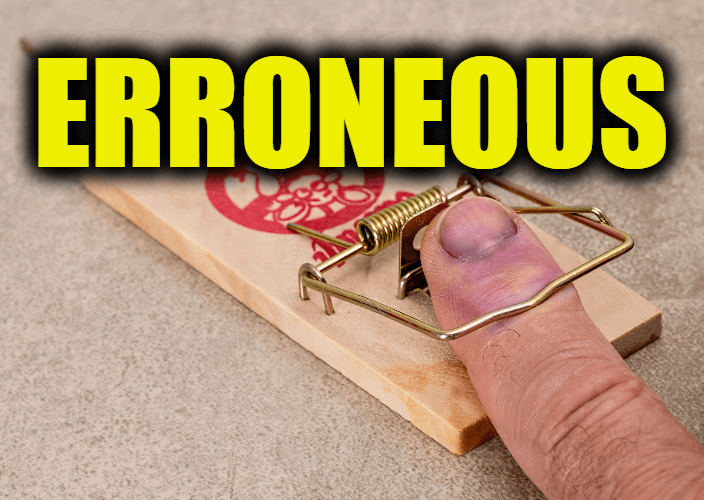Learn how to enhance your language skills with practical examples! Explore the word “erroneous” and discover how to use it correctly in sentences for more effective communication.

Definition of Erroneous
The term “erroneous” is an adjective used to describe something that is incorrect, inaccurate, or containing mistakes. It refers to information, beliefs, actions, or statements that are not in accordance with facts, truth, or accepted standards. When something is described as erroneous, it means it contains errors or flaws that need correction or clarification.
How is “Erroneous” used in English? What are the rules of use of “Erroneous”?
“Erroneous” is used in English to describe something that is mistaken, incorrect, or faulty. It is typically used in the following ways:
- Adjective: “Erroneous” functions as an adjective and is used to modify nouns, providing more information about them. For example:
- “The erroneous calculation led to financial losses.”
- “Her erroneous assumptions about the project’s scope caused delays.”
- Verb: “Erroneous” can also be used as part of a sentence where a verb is involved, often in combination with verbs like “to be” or “to make”:
- “The report was found to be erroneous.”
- “They inadvertently made an erroneous claim.”
- Adverb: While less common, “erroneously” is the adverb form of “erroneous.” It describes how something is done incorrectly or mistakenly:
- “She erroneously believed that the meeting was canceled.”
When using “erroneous” in English, it’s essential to consider the context and the type of mistake or inaccuracy being described. Generally, it is used when you want to emphasize that something is factually incorrect or misleading. It can be applied to various situations, such as incorrect information, calculations, judgments, beliefs, or assumptions.
Rules for using “erroneous” correctly:
- Use “erroneous” as an adjective to describe nouns.
- Ensure that the context clearly indicates something is incorrect or mistaken.
- Use “erroneously” as an adverb to describe how something is done incorrectly or mistakenly, but use it less frequently compared to the adjective form.
Remember that effective communication depends on context, so choose the form of “erroneous” that fits the specific sentence or situation appropriately.
How to use the word Erroneous in a sentence?
You can use the word “erroneous” in a sentence to convey that something is incorrect or mistaken. Here are some examples of how to use it in different contexts:
- Information or Data Errors:
- “The erroneous data in the research report skewed the results.”
- “She received an erroneous email containing inaccurate account information.”
- Judgment or Belief Mistakes:
- “His erroneous belief that the Earth is flat contradicts established scientific knowledge.”
- “The manager made an erroneous judgment when selecting the vendor.”
- Calculation or Measurement Errors:
- “The erroneous calculation resulted in an overpayment of taxes.”
- “The thermometer gave an erroneous reading due to a malfunction.”
- Legal or Administrative Errors:
- “The court overturned the decision due to an erroneous interpretation of the law.”
- “The erroneous filing of documents caused delays in processing the application.”
- Everyday Usage:
- “She realized her erroneous assumption about the meeting time when no one else showed up.”
- “The newspaper published an erroneous headline that caused confusion.”
In these sentences, “erroneous” is used to emphasize that something is wrong, mistaken, or incorrect in various contexts. It’s important to ensure that the context of your sentence makes it clear what is erroneous and why, as this will help convey your intended meaning effectively.